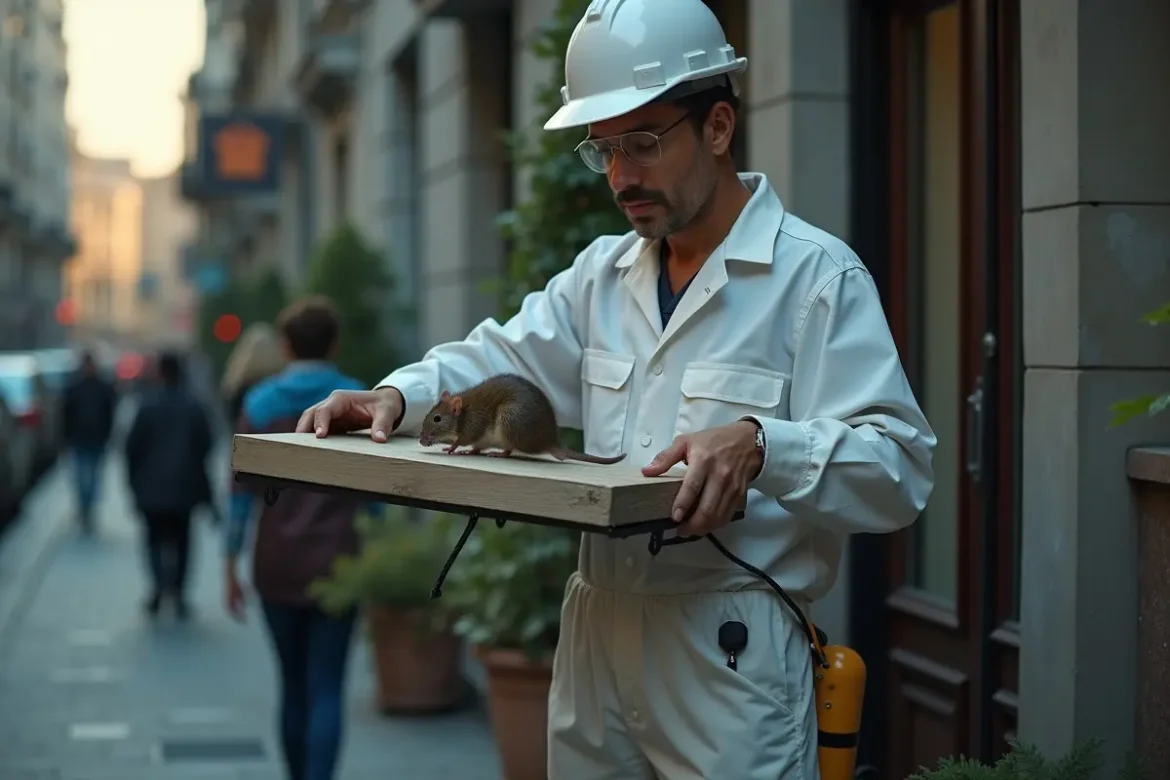
Dealing with a rat problem in your home?
Nobody wants to share their space with these disease-carrying rodents. The bad news is that rat populations are exploding across major cities. The good news?
There are safe and humane rat removal methods that actually work.
Learning how to rid your house of rats if you live in Ventura County starts with understanding what attracts them, how to humanely get rid of them and most importantly… how to keep them away for good.
Let’s jump right in.
Contents
Understanding The Rat Problem
Rat complaints have increased in 11 out of 16 major cities worldwide over the last year.
The climate crisis is a surprisingly big factor. Warmer temperatures mean longer breeding seasons and rats that thrive year-round.
Chicago secured the #1 spot for the rattiest city for the tenth straight year. But before you breathe a sigh of relief if you’re not in Chicago, know this: the rat boom isn’t slowing down anywhere. Warming temperatures account for over 40% of the increase in rat populations in cities that are heating up fastest.
Here’s why you should care about booming rat populations.
Female rats can have a litter every month, 8-16 babies each time. In one year, one breeding pair of rats can lead to hundreds of rats.
The longer you wait to deal with a rat problem… The bigger the infestation gets.
They also carry disease. Rats are a source of leptospirosis, salmonella and hantavirus.
They can spread through their urine, droppings, saliva and body secretions. They can gnaw through steel trash cans, so your home’s structure is at risk too.
Traditional Rat Extermination Methods Fail
Here’s the typical reaction when most people spot their first evidence of rats.
Spray some rat poison. Set a few snap traps. Wait for the problem to go away.
Big mistake.
Here’s the truth about traditional extermination methods:
Rat poison (rodenticide) makes rats suffer a prolonged death, dying over days or even weeks. It’s inhumane suffering. And poisoned rats that pets or wildlife eat present serious health risks to them too. The use of rodenticides has gone up in many cities, and yet rat populations are still increasing.
Glue traps are even worse. They cause slow, agonizing deaths as rats can’t free themselves from the trap, usually over the course of hours or days. Glue traps have been banned in several countries due to the cruelty.
Snap traps will only work if you know where to place them and are willing to check them multiple times a day. Cheap traps will injure, not kill rats instantly. If you don’t check your traps every 12 hours at a minimum, rats will suffer.
But the bigger problem with all lethal methods is this…
They do not address the underlying issue.
If you don’t remove what attracted rats in the first place — food, water and shelter — other rats will simply move into the vacant territory.
It’s an endless cycle of killing and replacing that costs you time and money.
Humane Rat Removal Strategies That Work
The best way to get rid of rats? Prevent them from moving in at all.
Once you make your home and property unattractive to them, most rats will move on in search of an easier meal.
Step 1: Seal Entry Points
Rats need very little room to squeeze inside your home.
A rat can fit through a hole the size of a quarter. Mice require even less space.
Walk around the perimeter of your property and inspect it for:
- Cracks or gaps around doors, windows and foundation
- Holes around pipes, vents and utility lines
- Spaces where bricks are loose or mortar is deteriorating
Seal every opening you find with steel wool, copper mesh or metal flashing. Don’t use spray foam alone, because rats can chew through it.
Step 2: Remove Food Sources
Rats will feast on anything you leave accessible.
Store all food in sealed, chew-proof containers. Pet food, bird seed and pantry items all qualify. Don’t leave pet food bowls out overnight.
Bird feeders? Use trays under them to catch spilled seed. Bring feeders in at night.
Secure your trash in metal cans with tight lids. Hold off putting it outside until the day of trash collection. Pick up any fallen fruit from trees immediately. Even compost bins can attract rats if they are not properly secured.
Step 3: Eliminate Hiding Spots
Rats love clutter & overgrown vegetation because they give rats cover from predators.
Keep grass mowed short and shrubs trimmed back from house walls. Remove wood piles, debris and yard waste. Clear clutter in garages, sheds & basements. The less cover rats have, the less comfortable they will feel on your property.
Step 4: Use Exclusion Methods
If rats are already inside your home, exclusion is the most humane removal method.
Professional wildlife control companies create one-way exits for rats to leave through, then seal those points off permanently. Rats are captured in one-way traps and removed, and then all entry points get permanently blocked. This method allows for 100% removal without suffering.
Some homeowners try live-catch traps to relocate rats. But here’s something most people don’t know… Relocated rats rarely survive in new territory. Rats either return to your property or die trying to find a new one. In most cases, relocation just spreads your rat problem to another property.
The better approach? Focus on exclusion and prevention.
Prevention: Your Best Long-Term Solution
The absolute best rat removal method? Prevention.
Once you seal your home and remove attractants, consistently maintain these practices.
Regularly inspect your property for new gaps or cracks and seal them as needed. Continue with yard maintenance. Store food properly and manage trash responsibly.
Additional deterrents that work:
Natural predators like outdoor cats or owls can help keep rat populations down. Install an owl nesting box to encourage these natural predators to patrol your property. Some plants like mint, spearmint & citronella act as natural repellents.
Motion-activated lights and noise makers can also discourage rats from certain areas. But don’t rely on them. They should supplement your main prevention strategy, not replace it.
If you are dealing with a persistent infestation that you can’t manage alone, it’s time to call in the pros. Choose a professional wildlife control service that uses humane exclusion methods rather than poisons or lethal traps.
Professional services typically come with a guarantee. If rats return after treatment, the company will come back to address the problem at no additional charge.
Professional wildlife removal companies will do a property inspection to identify potential entry points, then humanely remove existing rats and implement prevention measures.
Final Thoughts
Rat removal can be safe, effective & humane.
By taking steps to remove the things that attract rats to your property, you can permanently solve your rat problem without resorting to killing or leaving your family at risk from toxins.
Remember…
Seal all entry points
Remove food, water & shelter
Use exclusion rather than lethal methods
Practice prevention every day
Call professionals for serious infestations



